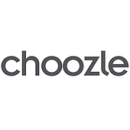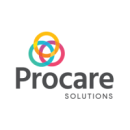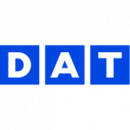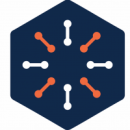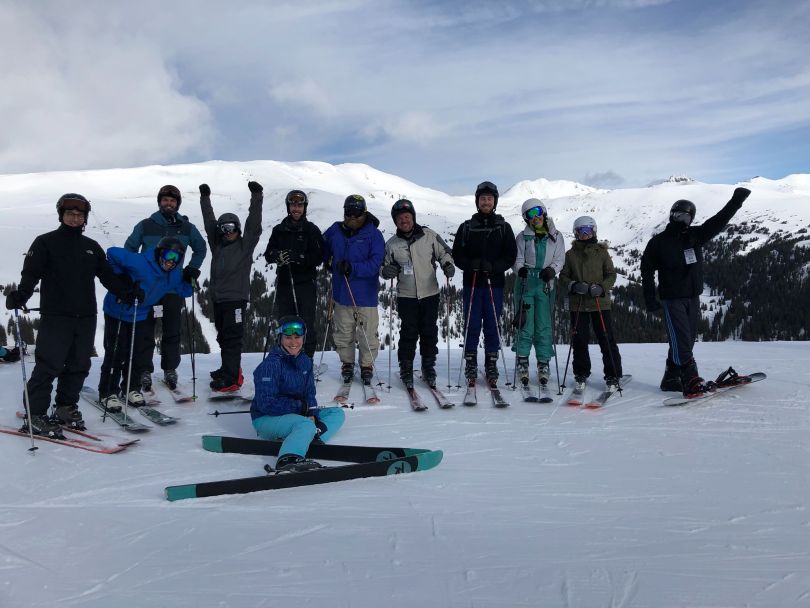
No day is the same for software engineers at a growing tech company. One day they could be leveraging React and GraphQL to develop customer experiences on the front end. The next day, they’re delivering information to the user with Postgres and DynamoDB. And the day after that? They’re using Google Cloud Platform with a Firestone-managed database to create consistency between the front and back end.
While it may seem hectic to those who aren’t well-versed in engineering tech stacks, this type of variety is actually what some engineers prefer. “My favorite thing about our tech stack is that there are multiple opportunities to learn new and exciting technologies as well as tried and true ones,” Erin Hinson, a senior front-end engineer, said.
Below, we connected with engineers from 11 local tech companies who all boast the opportunity to work across a variety of technologies on a daily basis.
What’s more? They say leadership encourages them to grow their skills across the stack.
What they do: Choozle provides a digital advertising software platform that leverages detailed consumer data to power programmatic advertising campaigns across display, video, mobile and other mediums.
Choozle’s tech stack: “Over the last year, our team has gone through an application rebuild, with our core focus being on modernizing and streamlining our tech stack to maximize our team’s efforts,” O’Donnell said. “Today, our tech stack is React with TypeScript for our front end and Go for the back end. We also use Google Cloud Platform with a Firestore managed database and OpenAPI to help automate documentation and create consistency between the front and back end. All of the tools within our tech stack are to help get developers up and running quickly and to maximize our team’s impact.”
A careful balance: “Undergoing an application rebuild is no easy undertaking. We’ve been very thoughtful in our approach and continue to find new challenges along the way. We didn’t want to copy over the old code and processes to the new build. The biggest challenge we’ve encountered during this rebuild is how to optimize implementation while thinking about current needs and future needs. You can easily over-optimize or limit the flexibility of your platform. It was, for sure, a very careful balance.”
Creating connections across the company: “Our team, as well as Choozle as a whole, provides opportunities for our employees to work and collaborate outside of their team. Our developers and engineers have the ability to collaborate with people from product, account management and sales to really learn how our platform is used. This collaboration allows our team to fully understand what they are building, the impact it can have on our customers, and create connections across the company.”
What they do: Reserve Trust is a fintech company that builds financial infrastructure as a service. The company enables software and payment companies to embed accounts and payments into their workflows in order to power real-time, compliant payments.
Reserve Trust’s tech stack: “We use a little bit of everything,” Zarlengo said. “We love React and GraphQL for developing customer experiences as well as supporting our internal teams with top-notch tools. AWS provides a rock-solid platform for hosting our services, training our machine learning models and keeping our data safe.”
A complete banking core: “We’re in the process of developing a complete banking core that has direct access to the nation’s payment systems using modern languages and techniques. This core will not only move money globally between consumers, businesses, banks and the federal reserve, but we’re building functionality for the next step of financial transactions such as cryptocurrency and NFTs. It’s a creative problem-solving puzzle with interesting challenges in security, scalability, availability, throughput and regulatory compliance.”
Unique opportunities: “Our company and engineering team are unique due to the nature of our business. On one hand, we are a highly regulated financial institution with direct Federal Reserve access. At the same time, we are a small, agile and fast startup without the baggage of larger banks. This gives us the opportunity to go extremely fast in an environment that has generally avoided innovation.”
What they do: Software company Procare Solutions provides users with child care management, parent engagement, payment processing and other administrative taskwork so that teachers can focus on engaging with their students.
Procare Solutions’ tech stack: “We have a number of different platforms,” Miller says. “One of our main ones is built on Ruby on Rails with a React front end as well as Swift and Android for native mobile apps. We also have a number of products on more traditional Java and .NET stacks, so there’s something for everyone! In terms of database technologies, it’s a mixture of Postgres, DynamoDB, Microsoft SQL Server and MySQL. We build our applications in the AWS cloud whenever possible, and leverage its cloud-native services such as Lambda, Athena and SQS.”
A service to society: “We’re seeing incredible growth around our Procare Online product. It enables child care and educational facilities — from small in-home daycares to large school districts — to manage their students, staff, curriculum, tuition payments and more in an effective way. We also provide tools and mobile applications for parents to engage with the child care centers and follow their kids’ activities and educational progress throughout the day. It feels great to build a product that is truly a service to society.”
Develop your skills: “We’re a uniquely sized company. We’re small enough to be nimble and for each employee to truly make a difference, but at the same time, we’re very well funded with the resources necessary for employees to do their jobs well and develop their careers. Our culture is both friendly and approachable and demonstrates proficiency in user experience, agile methodologies, enterprise architecture, coding practices and more. Regardless of where your passion lies, we work to develop your skills and provide you with a lasting career.”
What they do: Mersive is a wireless collaboration product suite that creates productive meeting experiences while enabling group interaction and increased engagement. Its services are used by companies and universities across the globe.
Mersive’s tech stack: “My favorite tools we use are Python and React,” Longenecker said. “I love Python because it can be used to perform data analysis, machine learning and automation. It also builds powerful visualizations. React is a simple, fast and scalable tool that allows us to create web applications that can change the data without needing to reload the page.”
Real-world applications: “One of the most interesting projects I’ve worked on is what we called the Support Alert/Log Trigger. I enjoyed that I got to use data analysis to identify ‘regions’ where pods are located in order to determine if they’ve been offline for longer than a specified period of time and notify customers of this occurrence. This was the first project that I had the opportunity to apply methods learned in school to a real-world problem.”
A focus on goals and results: “My team communicates well with each other, offers support when needed and is focused on goals and results. The team is very good at hearing ideas from each person and offering feedback based on those ideas. This is the first engineering org that I have been a part of, and I think that these qualities are very important for a successful team.”
What they do: Maxwell is a digital mortgage and value-added services platform designed for small to midsize mortgage lenders. The company works with non-depository mortgage banks, credit unions, brokers and community banks.
Maxwell’s tech stack: “We have a fairly standard Ruby on Rails stack with a React and Redux frontend utilizing our component library and hosted in Heroku and AWS,” Lamy said. “As we grow, we continue to expand our tech stack to fit our engineering and business needs. We’ve recently introduced optical character recognition technology into our document processing application and we are in the beginning stages of building out a data warehouse. Our team heavily utilizes any tools that give us better observability with our systems or data. This includes data reporting tools like Metabase, CloudWatch for metrics and logging, and Papertrail to quickly debug any issues.”
Removing barriers to entry: “Through our software and services, we handle a significant amount of data. We want to leverage that data to improve the efficiency and throughput of the lenders in the Maxwell network, and also to improve the user experience and remove the barrier to entry for all borrowers. This leads to one of our current projects, which is building out our data analytics stack and strategy to accomplish our goals. While this project is certainly challenging, the most enjoyable part comes down to the people. The people I work with at Maxwell are amazing, which makes this (or any project) enjoyable.”
Sharing moments of gratitude: “Our team truly embodies our company values of Rigor, Ownership, Curiosity, Kindness and Straight-Up, and those are important to us when hiring. Part of our culture is our #gratitude Slack channel where we recognize teammates who exemplify those values. It’s actually our most-used channel at the company, which I think says a lot about our culture!”
What they do: Using a variety of proprietary software solutions, DAT Software & Analytics matches freight for shippers, brokers and carriers as well as provides deep data insights across the supply chain.
DAT’s tech stack: “Our tech stack includes Angular, JavaScript, TypeScript, Node.js, Express, Koa, Java, C#, MySQL, DynamoDB, Lambda and more,” Taub said. “We primarily work with Angular front-end applications with Node.js and Koa middleware running in Docker containers hosted in AWS. With AWS, we can scale our services on demand to meet the needs of an increasing customer base. This flexibility dramatically reduces our time to market for new products and offerings.”
Reliable and actionable products: “Part of our core business is providing customers with deep analytics around the movement of freight. We have two flagship products for that: RateView and Ratecast. RateView allows customers to understand historical costs, which then allows us to predict future rates with Ratecast. Ensuring these products are reliable and actionable requires the full breadth of our tech stack, and that we apply that toolkit to our data science pipelines and knowledge base. These products are challenging to get right, but when you do, it enables solutions that have a direct impact on a supply chain that touches many consumers. Having that kind of reach is a software engineer’s dream.”
A seat at the table: “The belief that great ideas come from all places regardless of experience and background is not just a sound byte to us. It’s a mantra we practice in earnest. We’ve institutionalized activities like pair programming, team ticket grooming, collaborative product demos, group code reviews and more. Engineers have a seat at the table when choosing which technology to engage for products, and they’re an integral part of the discussions that determine the future of our tech stack.”
What they do: Red Canary is a cloud-based security company that protects its clients with a managed detection and response system that can be deployed in minutes to shut down cyberattacks.
Red Canary’s tech stack: “Red Canary’s main products are built using Ruby,” Shaffer said. “Ruby lends itself nicely to solving problems quickly. Coupled with our other tools, particularly AWS for hosting and Kubernetes to manage our containers, we’re able to scale more easily. Considering the volume of data we handle, that’s a huge benefit. Ruby is the first programming language I ever learned that felt custom-made for my brain. So being able to leverage those skills and passion at work is really great.”
Aggregating and correlating alerts: “I’ve been focused on our alert center product. It integrates with third-party security products to aggregate and correlate hundreds of alerts quickly in a single place. It’s a big challenge to get all those products working with Red Canary. With such a challenge comes great reward in knowing that I’m helping teams that are inundated with alerts better focus on the ones that matter.”
A supportive culture: “As a person new to cybersecurity engineering, my team has been instrumental in helping me acclimate through coaching, mentoring and collaboration. The people are simply great to work with. They’re supportive and there’s a sense of shared ownership. We also have a fun little ritual where we give our sprints names using peach puns.”
What they do: CyberGRX provides enterprise companies and their third-party vendors with a cost-effective and scalable approach to cyber risk management. Through its proprietary platform, the company arms organizations with data and advanced analytics to manage, monitor and mitigate risk in their partner ecosystems.
CyberGRX’s tech stack: “We have a complicated and pretty custom structure here at CyberGRX,” Grigsby said. “On the back end, we have three generations of Python architecture, a few Go microservices and a TypeScript Node.js beta. We heavily leverage GraphQL and schema stitching to keep logic out of the front end. Our databases and other storage include Neo4j, Redis, S3 and Postgres. Finally, our front end is composed of React, TypeScript and GraphQL. What I love most about our stack is our variety — no day is the same. And though not all of us work full stack, we have the opportunity and encouragement to grow our skills in all aspects of the stack.”
Architecting a new service: “My team is focused on our TypeScript Node.js microservice, which uses a materialized view to cut down on rendering time and greatly improve the user experience as well as data integrity. Most of us are Python developers with little-to-no Node.js or Prisma expertise. This presents a lot of challenges from local development to schema changes. On the bright side, we have the opportunity to learn full stack JavaScript and explore more efficient ways to display table data. It has been super rewarding to be a part of architecting a new service.”
A sense of trust among colleagues: “I think our focus on paired programming and communication is one of our biggest strengths as an engineering organization. Recently, we broke out into small teams, which allows us to have a rotating pairing schedule. Now, every individual can touch most tickets, enabling knowledge sharing and fresh eyes when we get stuck. We switch back and forth as a driver which fosters a sense of trust among colleagues. I might be the most junior person on the team, but working one-on-one lets me feel heard and encouraged as I develop my skills.”
What they do: Workiva is a reporting compliance platform that enables the use of connected data and automation of reporting across finance, accounting, risk and compliance.
Workiva’s tech stack: “I’m on a full stack team at Workiva, which means we leverage a wide variety of languages, libraries and tools in our tech stack,” Sperry said. “We write in Dart on the frontend, and use React Redux and Flux and CodeceptJS for functional tests. On the backend, we use Kotlin and Python. Our continuous integration uses Docker and Skynet to handle builds and testing, and then we have a bot named Rosie who runs our automated release process.”
Restructuring code patterns: “We’ve added a few new engineers to the team since the beginning of the year, so it’s been really exciting to feel the extra momentum behind goals we’ve been pushing toward for a while. Our team focuses on two different solutions within the Workiva platform. We’re working to streamline both experiences to make users’ workflows more intuitive, easier to manage and increasingly customizable. It’s been a challenge to restructure some of our code patterns across multiple repos to accommodate uniformity and flexibility, but it’s satisfying to watch it translate into demonstrable value for our customers (while minimizing future maintenance and bespoke support work).”
Experimental features: “Every year, all of R&D gets together to work on special projects across teams and to jam on areas of interest or experimental features that we might not be able to focus on during our regular sprint cycles. It’s fun to shake things up and I’m always astonished by the creativity and ingenuity in what my colleagues are able to deliver in such a short period of time.”
What they do: Bonusly is an HR tech company that provides solutions to companies to help foster a high-performance, high-engagement workplace.
Bonusly’s tech stack: “Ruby on Rails is at the core of Bonusly’s stack, but as we grow we are focused on using the right tool for the right problem,” Hinson said. “We use Sidekiq for background jobs and Datadog for observability. As for the frontend, we have a growing adoption of React with TypeScript across our projects. Our newest offering, Signals, uses React as well as more recent frameworks like Apollo GraphQL. For testing, we are using a mix of tools, including Jest, Cypress, Storybook and RSpec. My favorite thing about our tech stack is that there are multiple opportunities to learn new and exciting technologies as well as tried and true ones.”
Launching a new search feature: “When I started at Bonusly, I was able to start contributing immediately despite not being familiar with the codebase. Because of the thorough onboarding process and the supportive environment, I helped launch the redesigned Rewards catalog with a new search feature. Now, I’m working on the ability to seamlessly integrate Bonusly’s rewards platform with a custom-designed gear provider. In the future, I’m excited to have a chance to work on projects like breaking out microservices from our monolith app to allow us increased speed, performance, scalability and agility so we can add even more features. What I enjoy most about every project I work on is that I am able to live up to our core value of Delight the Customer.”
A strong company culture: “As soon as I met the people I would be working with at Bonusly, I knew I wanted to work here. My manager, Nowai Matthew, provides a space where the team can build psychological safety with each other. We feel empowered to speak up and try things out. I’ve never met anyone on my team in person, but I’ve never felt a company’s culture as strongly as I do here. It’s not an accident. A company growing as quickly as Bonusly can lose sight of its values pretty easily. All Bonusly employees use the Bonusly app because we live what we’re trying to create.”
What they do: Flyreel is designed to help simplify the insurance process for both carriers and policyholders. It created a self-service property inspection tool designed to make the home inspection process safer and more seamless.
Flyreel’s tech stack: “Generally my team uses a lot of PyTorch and TensorFlow,” Palmer said. “We use Docker and TensorFlow for the heavier models and TensorFlow Lite for when we’re close to the edge.”
Collaborating across disciplines: “Right now, I’m working on a sprawling computing-type system that involves a lot of real-time data, high-touch design and heavy offline computation. Since the project spans so many technical disciplines, I’ve had a really good time collaborating and brainstorming across what would be traditional discipline boundaries.”
A rare company culture: “Flyreel has been described as a company made up of people who ‘take their work, but not themselves, seriously.’ In my opinion, that’s true! That culture (which in my experience is pretty rare in tech) makes it surprisingly easy to collaborate. It makes it possible to focus purely on the enjoyment of the work itself as well as on creating something beautiful — without egos getting in the way.”



